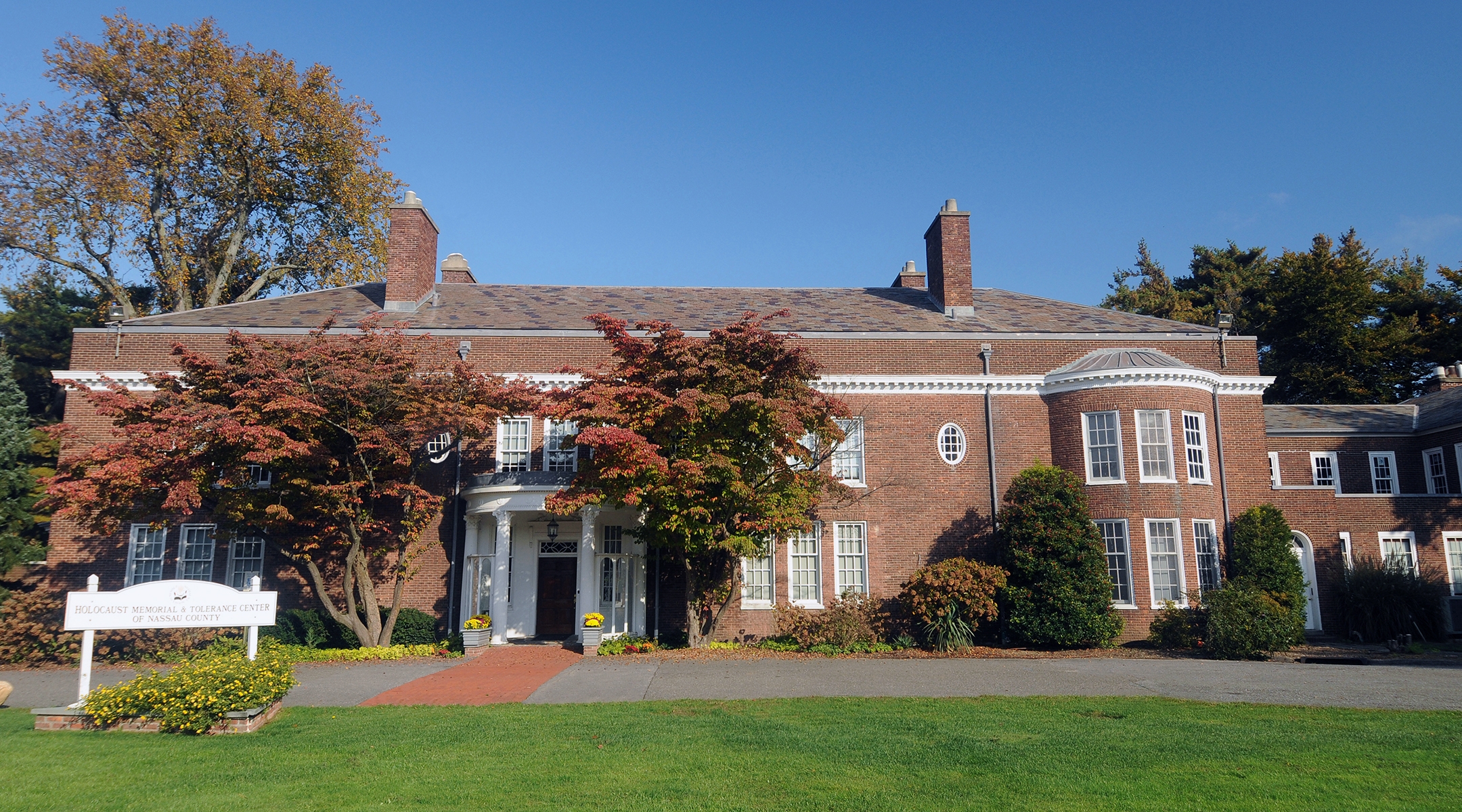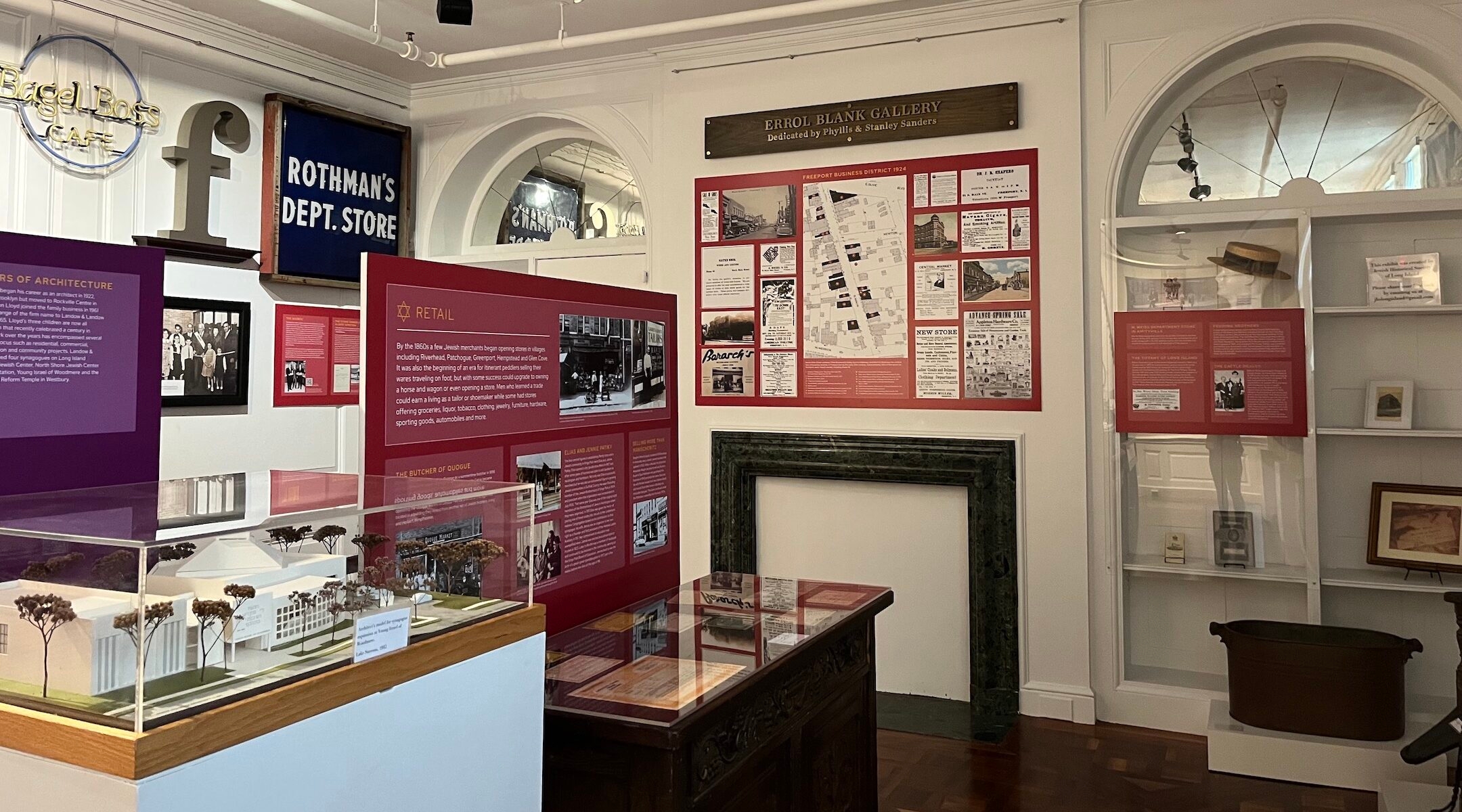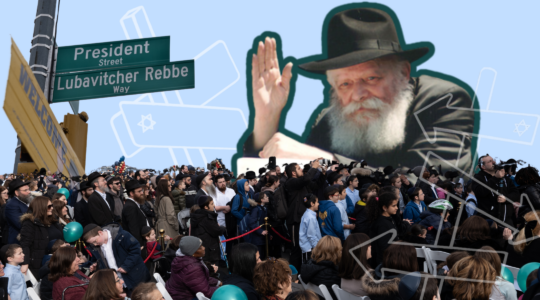(New York Jewish Week) — In the 1920s, when a disease hit Long Island cucumbers, Joseph and Katie Rothman of East Northport in Suffolk County realized that their pickling business needed to pivot in order to survive.
Just what do you do when you have huge vats of brine but no cucumbers to put inside? In the Rothmans’ case, they turned to cabbage: Thus, Katie’s Sauerkraut was born.
“I lived a block from the factory, and you could smell the plant all over East Northport, especially on a hot day,” said Keith Rothman about his grandparents’ business, which closed in the early 1960s.
The Rothmans’ story is one of many told in a new exhibit at the Holocaust Memorial and Tolerance Center in Nassau County’s Glen Cove. The exhibit, “Earning a Living: 300 Years of Jewish Businesses on Long Island,” which opened last Monday, focuses on the early history of Jewish businesses on the island, from farmers to peddlers to even a bootlegger who manufactured his own alcohol during the Prohibition era.
“Earning a Living” also marks the debut of the Long Island Jewish History Museum, a project of the newly formed Long Island Jewish Historical Society. Though the fledgling organization currently occupies a temporary exhibition room at the Holocaust Memorial and Tolerance Center, it aims to be the first-ever institution dedicated to the history of the Jews of Suffolk and Nassau Counties.
“There has essentially been no significant deep dive into Long Island Jewish history, ever,” Brad Kolodny, the exhibit’s curator and president of the Long Island Jewish Historical Society, told the New York Jewish Week. “One of the reasons why Long Island Jewish history has been overlooked is because Long Island is somewhat an outgrowth of New York City.”
With over 300,000 Jewish residents, Long Island’s Jewish population rivals those of cities such as Chicago and Washington, D.C. But unlike those other cities, Long Island’s Jewish history is inextricably linked to that of New York City, since many who filled the suburbs in Nassau and Suffolk counties, especially after World War II, moved there from the five boroughs. But the museum also plans to tell a story that predates that post-war boom.
“The earliest Jews who came out to Long Island were peddlers selling goods that they could either carry on their back or, if they were wealthy enough, on a horse and wagon,” Kolodny said. “They would go from farmhouse to farmhouse and town to town selling their goods.”

For now, the Long Island Jewish History Museum occupies a single room at the Holocaust Memorial and Tolerance Center, a former summer estate in Glen Cove built by a wealthy oil industrialist. (Courtesy)
These early Jewish peddlers didn’t form a community. It wasn’t until 1896 that rubber factory workers in Setauket established the first synagogue in Long Island, Agudas Achim, which was Orthodox. Though the building still stands, it is no longer being used as a synagogue.
The Setauket synagogue isn’t the only example of Jewish communities on Long Island forming around business. In the 1700s and 1800s, work opportunities on the island matched skills that immigrant Jews learned in Europe.
Peddling, for example, “was an easy occupation to enter; you didn’t necessarily have to have an education,” Kolodny said. “If you had a couple of dollars to buy merchandise wholesale, you were then able to sell it retail and make a profit.”
Because of discrimination in their countries of origin, many Jews were historically prevented from entering jobs in, for example, government or medicine. Instead, they became tailors, bakers and jewelers. According to Kolodny, Jews settled in 75 different towns, and, by 1918, synagogues had been established in a dozen villages.
The post-war boom saw veterans buying starter homes on the G.I. Bill, as well as Holocaust survivors who found work in Nassau or Suffolk county. Between 1940 and 1960, the Jewish population of Nassau County grew an astounding 1,770 percent; from the end of World War II until 1970, 105 synagogue buildings were constructed.
Long Island’s “retail establishments really became a place where survivors could come and get jobs, because a lot of the owners spoke Yiddish,” said Andrea Bolender, the acting executive director of the Holocaust Memorial and Tolerance Center. Bolender herself is the daughter of a Holocaust survivor who worked as a kosher butcher on Long Island. Many survivors also had family sponsors on Long Island.
But not all of Long Island’s Jewish entrepreneurs followed the letter of the law. During Prohibition, for example, bootleggers like Harry Brause kept the parties going at the mansions on Long Island’s Gold Coast — the gin-soaked milieu made famous in “The Great Gatsby.”
Brause opened a liquor store in Glen Cove in 1912. But when it became illegal to sell alcohol Brause did two things: “The first thing he did was manufacture his own alcohol in a still that was located in the basement of his sister’s home in Sea Cliff,” Kolodny said. “He would then sell that alcohol to wealthy estate owners on the Gold Coast.”
Prohibition was repealed on Dec. 5, 1933. Brause Liquor Store stayed in business until the 1970s.
“Earning a Living” will be open for about six months. Come spring 2023, Kolodny hopes to display another exhibition in the same space for another six months. “Once we see how successful it was over the course of one year, we’ll reevaluate and see if the Holocaust center wants us to stay, if we can make an arrangement to renew that space, if or there would be additional space on the property that would be possible,” Kolodny said.
The latter idea just might work. According to Bolender, the museum is in talks with the Nassau County Executive to expand its property.
The Holocaust Memorial and Tolerance Center sits near the tip of Long Island’s North Shore, inside a 204-acre nature preserve. The building is a summer estate built by a wealthy oil industrialist, but after he and his wife died, the mansion fell into disrepair. It came under the ownership of Nassau County, from whom the museum now leases the property.
“As survivors pass, it’s urgent to make sure there’s a home for all of this,” Bolender said, explaining why she believes the museum should expand. “As COVID brought a lot of millennials back to Long Island, there’s a renewed interest in making sure our past is preserved.”
From March through August 2020, net in-migration more than doubled on Long Island — especially in Suffolk County, home of the Hamptons, according to the New York State Comptroller’s office.
The New York Jewish Week brings you the stories behind the headlines, keeping you connected to Jewish life in New York. Help sustain the reporting you trust by donating today.





